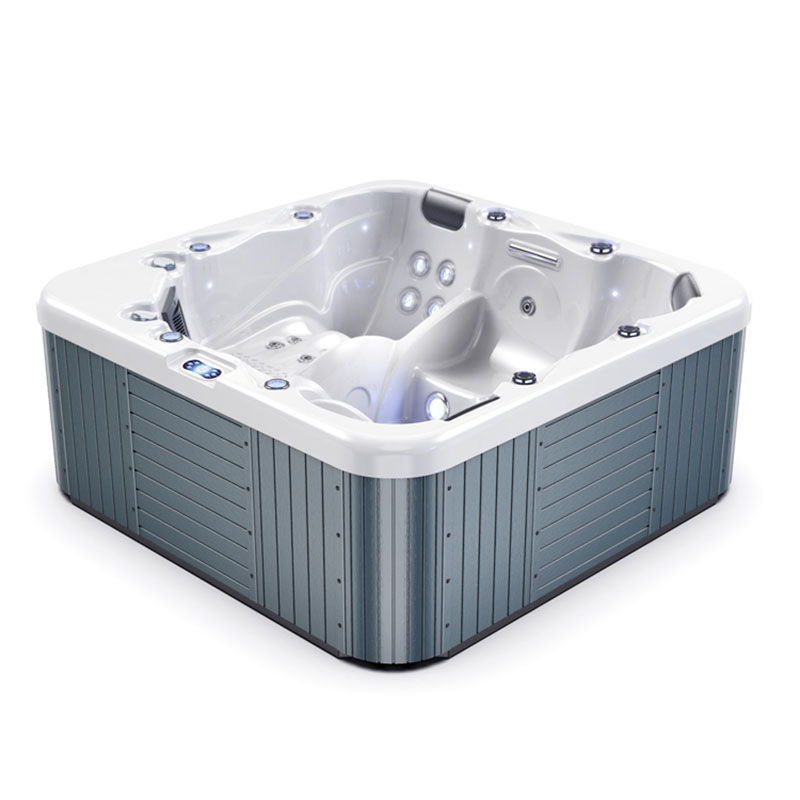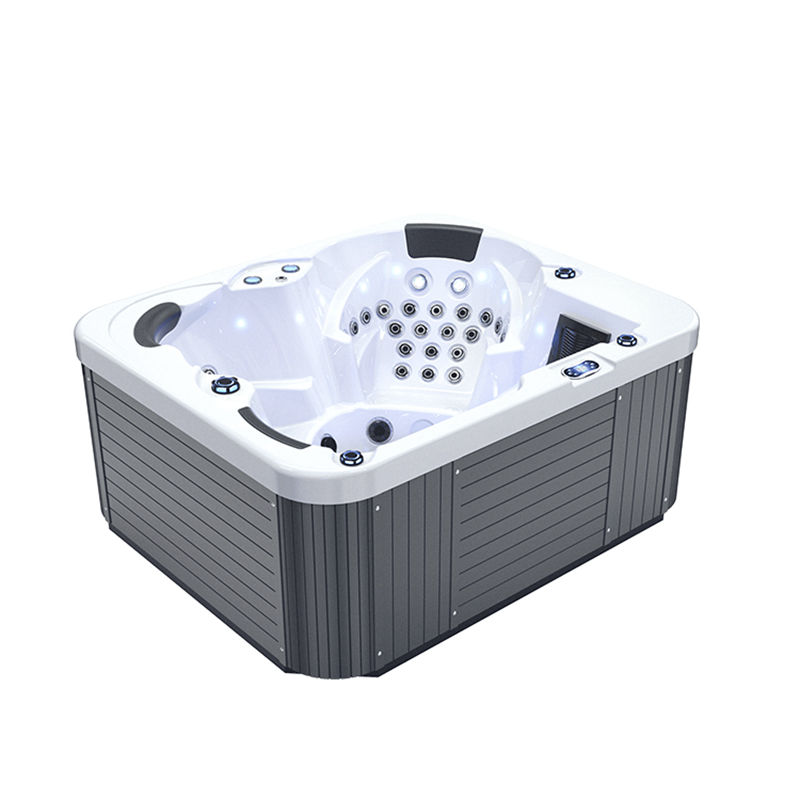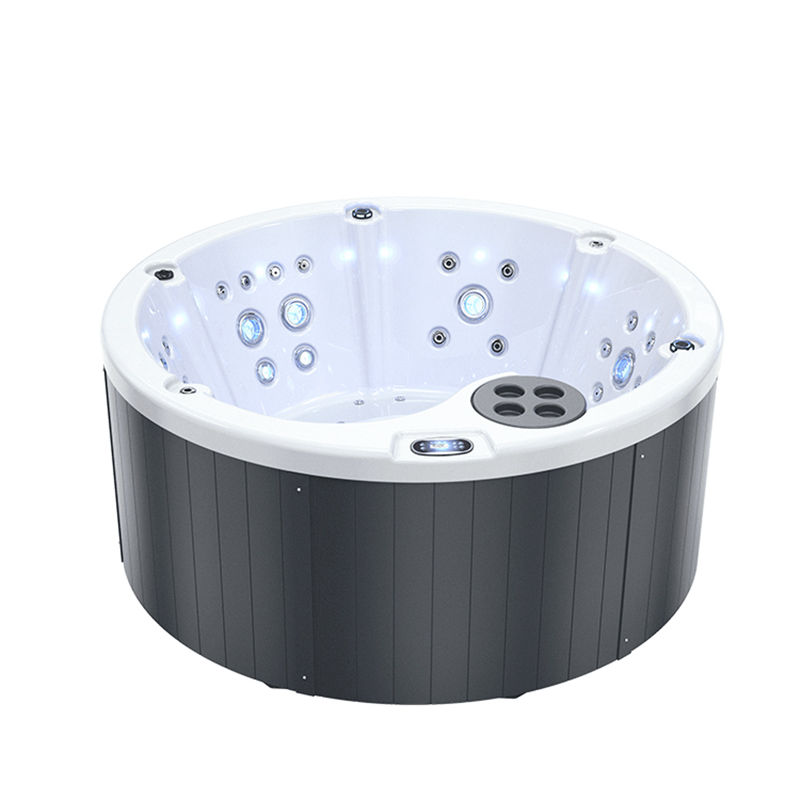As a luxury facility that provides relaxation and comfort, spa tubs have gradually become popular among consumers in recent years, especially outdoor spa tubs, which combine natural landscapes with comfortable enjoyment and have become an ideal choice for many families. Whether it is placed in a courtyard, terrace or next to a swimming pool, the installation location of the spa tub has a crucial impact on the user experience and maintenance costs. Choosing a suitable location can not only extend the service life of the outdoor spa tub, but also provide the best comfort and convenience. So, how to scientifically choose the best location for outdoor spa tubs?
This article will discuss in detail the following key factors: environmental conditions, ground support, privacy protection, convenience, safety, and water and electricity supply.
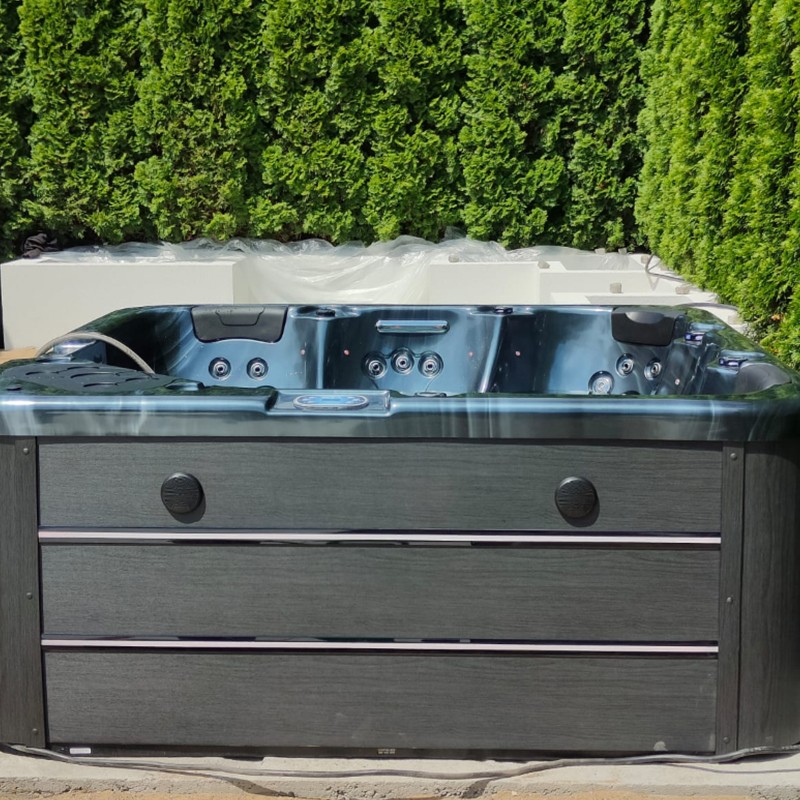
Environmental conditions: weather, sunshine and wind direction
When considering placing an outdoor spa tub, the first thing to pay attention to is the surrounding environmental conditions, including factors such as sunshine, wind direction and weather. These natural conditions directly affect the comfort and maintenance requirements of the outdoor spa tub.
1. Sunlight and shading
Sunlight is one of the important factors that determine the location of the outdoor spa tub. Too much sunlight can cause the water temperature to be too high, affecting the user experience, especially in the hot summer. Moreover, long-term exposure to strong sunlight will accelerate the aging of the tub materials and shorten the service life of the outdoor spa tub. On the contrary, a place without sunlight will cause the water temperature to be too low, especially in the cold season, which is not conducive to the insulation of the spa tub.
The best solution is to choose a place that can receive a moderate amount of sunlight and have a certain shade effect. For example, an adjustable awning or shaded area can be installed above the outdoor spa tub, so that too much direct sunlight can be avoided during the day, while still keeping the spa tub at a suitable temperature in the cold season.
2. Wind direction and ventilation
The wind direction and wind force should also be taken into consideration. Strong winds will accelerate the evaporation of water, making the maintenance of the outdoor spa tub more difficult. In addition, strong winds may also bring a lot of dust and fallen leaves, affecting the water quality. Ideally, the outdoor spa tub should be placed in an area that can be blocked by wind, such as near a building, fence or natural barrier (such as a hedge), which can provide protection and ensure air circulation.
3. Climate conditions
In addition, local climate conditions should also be considered. For example, in areas with humid climates, attention should be paid to the drainage and ventilation of outdoor spa tubs; in cold areas, consideration should be given to how to prevent the tub from freezing in winter. Therefore, outdoor spa tubs should be placed in well-drained areas to prevent water accumulation, and in cold areas, there should be appropriate heating facilities or anti-freeze devices around the outdoor spa tubs.
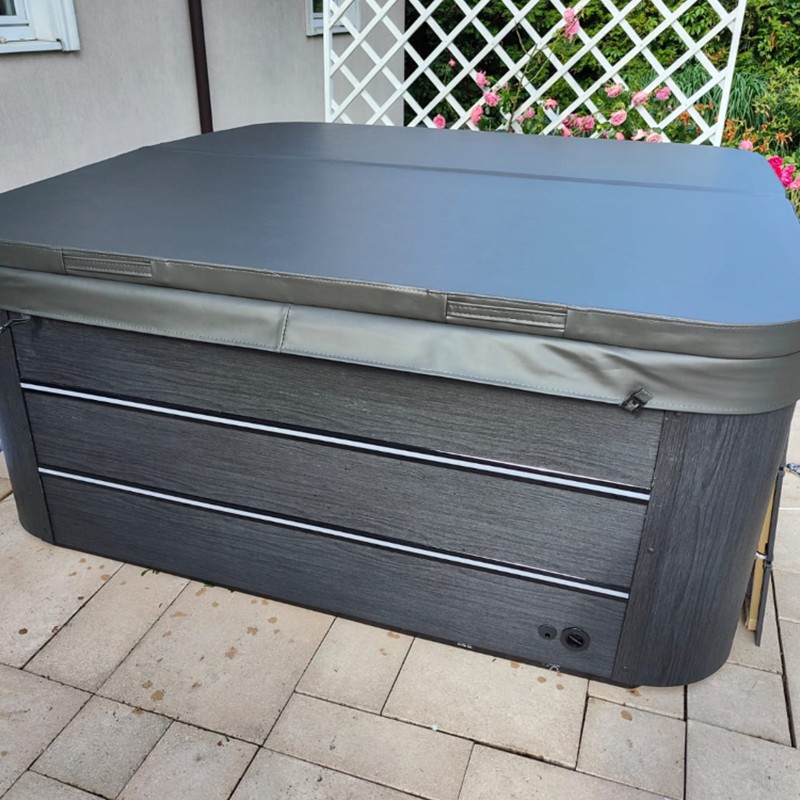
Ground support: firmness and stability
When the outdoor spa tub is filled with water, it will become very heavy, so it is crucial to ensure the firmness and stability of the ground where it is placed. Whether it is installed in a courtyard, terrace or lawn, the ground must be able to withstand the total weight of the outdoor spa tub and its users and maintain long-term stability.
1. Firmness of the foundation
Generally speaking, the ground foundation of the outdoor spa tub should be as hard and flat as possible. For example, cement or concrete foundations are ideal because these materials can provide firm support and prevent ground settlement or deformation. In addition, laying masonry or slate is also a common choice, but it is necessary to ensure that it is laid tightly enough to prevent uneven force on the bathtub.
If you plan to place your outdoor spa tub on a wooden deck, you must ensure that the deck has sufficient load-bearing capacity. Before installation, it is best to consult a professional to confirm whether the deck structure can bear the weight of the spa tub and to treat the wood with anti-corrosion and moisture-proof treatment.
2. Drainage system
It is also very important to choose a floor with good drainage capacity. When using an outdoor spa tub, a lot of water may be generated during water splashing or maintenance. If the drainage is not smooth, the accumulated water will cause damage to the foundation and the spa tub itself. Therefore, the tub should be placed on a sloped ground to ensure that water can flow out naturally and avoid water accumulation. If necessary, a special drainage system can be designed around the outdoor spa tub to ensure that there is no risk of flooding during long-term use.
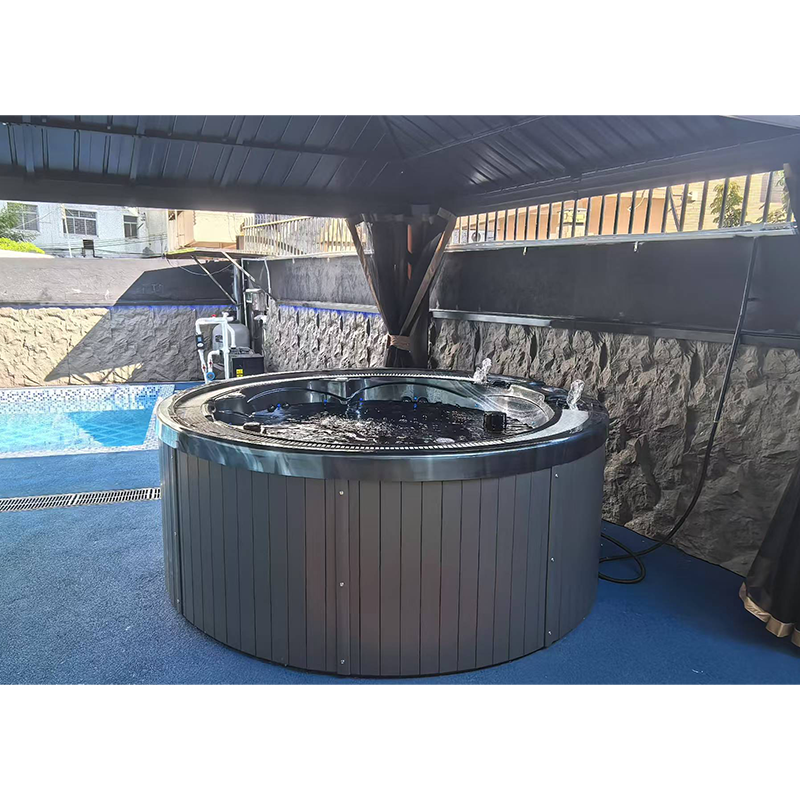
Privacy protection: shielding and sound insulation
The use environment of the outdoor spa tub needs to provide sufficient privacy protection. Most people want to relax when taking a bath without being disturbed or prying by the outside world. Therefore, it is important to choose an area that can provide privacy protection.
1. Natural or artificial barriers
Privacy can be protected by natural landscapes or artificial devices. For example, placing an outdoor spa tub near a fence, hedge or bushes can effectively block the view. If there is no existing barrier in the yard, consider installing a privacy fence, awning or partition wall to block the view and enhance the aesthetics of the space.
2. Soundproofing
In addition to privacy issues, noise interference also needs to be considered. The water pump of the outdoor spa tub will generate a certain amount of noise when working, which may affect nearby residents or family members. Therefore, choosing a location far away from neighbors or indoor living areas can effectively reduce noise interference. If space is limited and it is not possible to be far away from the living area, you can also consider installing sound-absorbing panels or green plants around the outdoor spa tub to help reduce the spread of noise.
Convenience: Passage and Access
The placement of the outdoor spa tub also needs to consider the convenience of daily use. A location that is easy to enter can not only increase the frequency of users' use, but also improve the overall quality of experience.
1. Traffic access
The outdoor spa tub should be placed near the entrance and exit of the house, especially in cold or wet weather, so that users do not have to walk a long distance to the open air area to enter the spa tub. In addition, the path should be flat and spacious to facilitate moving or carrying items. Especially when using it at night, make sure that the passage is well lit to ensure safety.
2. Storage and maintenance space
The use of outdoor spa tubs requires not only water and electricity, but also a certain amount of storage space for towels, bathrobes, cleaning supplies, etc. Therefore, the outdoor spa tub should be close to a location that can provide sufficient storage space, or a small locker should be set up nearby for easy access at any time. At the same time, considering that the bathtub needs regular maintenance and cleaning, sufficient space should be reserved around the outdoor spa tub so that maintenance personnel can operate smoothly.
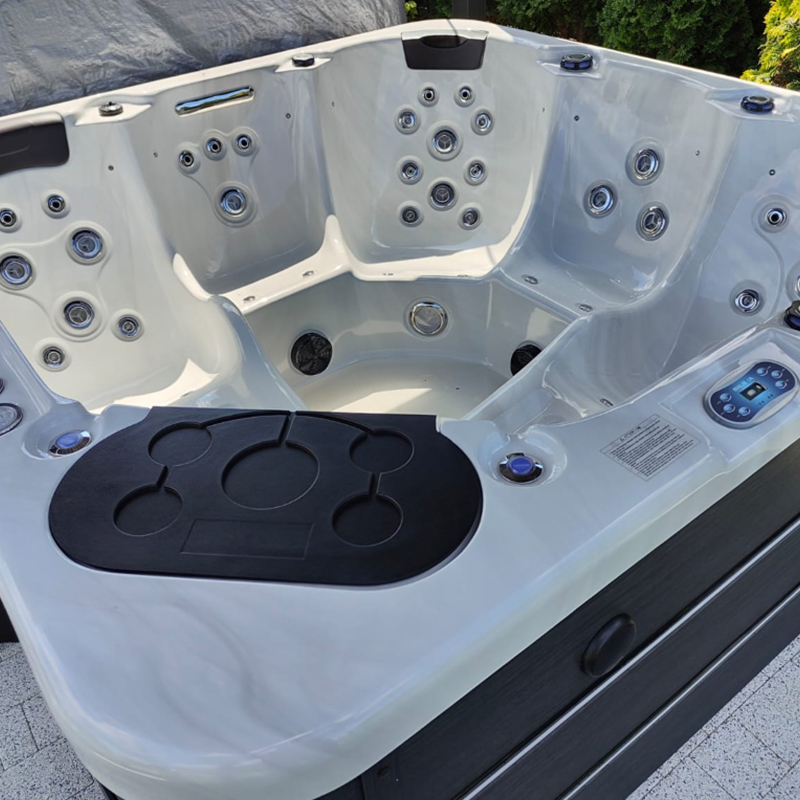
Safety: anti-slip floor and protective measures
When installing an outdoor spa tub, safety is also a factor that cannot be ignored. Since there is often water splashing around the outdoor spa tub, the slippery floor may cause accidents such as falls. Therefore, it is very important to choose a place that can minimize the risk of slipping and ensure the safety of users.
1. Anti-slip floor material
In order to improve safety, the floor around the outdoor spa tub should be paved with anti-slip material. For example, you can choose tiles, stones or rubber mats with anti-slip patterns. These materials are both beautiful and practical, and can effectively prevent the floor from slipping. In addition, you can also lay waterproof carpets at the entrance and exit of the bathtub to further improve safety.
2. Safety fences or handrails
For families with children or the elderly, safety fences or handrails are necessary protective measures. Fences can prevent children from accidentally falling into the bathtub, while handrails can help the elderly or people with limited mobility to enter and exit the bathtub safely. When placing an outdoor spa tub, it is best to choose a location where these protective facilities can be installed and ensure their stability and operability.
Water and electricity supply: water source and power system
The normal use of the outdoor spa tub depends on a reliable water and electricity supply, so it is very important to choose a location where the water and electricity system is easily accessible.
1. Convenience of water source
The outdoor spa tub needs to be replaced and replenished regularly, so it should be placed as close to the faucet or water supply system as possible to facilitate access to the water pipe. Choosing a place with convenient water source can reduce the trouble in daily use and avoid frequently stretching the water pipe or using additional equipment to divert water.
2. Power access
The water pump and heating system of the outdoor spa tub require power supply, so it is important to choose a location close to a power socket. At the same time, for safety reasons, the power system should have a waterproof and leakage-proof design, and should be installed and debugged by professional electricians to ensure safe use of electricity. If necessary, a waterproof power control box can be set up near the outdoor spa tub to facilitate control of the power supply.


